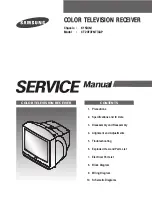
Packed Receiver
for Energy Harvesting Switch (AFZE)
OPERATING MANUAL
V03 EN Aug 2017 (BA_Empfaenger_EN_V03)
ZF Friedrichshafen AG
1
1 Safety guidelines
WARNING: Danger to life
• Do not install this product as part of a
safety-relevant, life or health preserving
facility.
CAUTION: Damage to the device due to
electrical discharge
• Observe the ESD protection.
CAUTION: Damage due to liquid in the
device
• Prevent liquid from getting inside the
components.
• Do not use solvents such as benzine or alcohol, or
scouring agent and scourers for cleaning.
2 Area of application
The receiver module was designed to receive radio
frequency signals from energy harvesting switches
(AFIM / AFIS). The receiver is suitable for wall or rail
installation in the area of automation technology and
has different connection options.
3 Interfaces
3.1 Power supply interface to connect the
power using the external supply
Use the „Power supply“ interface to connect the
power using an external supply. The external supply
must be galvanically isolated. The input voltage may
total 7 to 24 V DC.
1
Observe the polarity (left + right – when viewed
from the front)
2
Connect the external supply using the spring
terminal (wire diameter 0.5 to 1.5 mm2). To do
so, press the spring downwards by inserting a
screwdriver into the smaller opening, and by
pushing the wire into the larger opening.
3.2 USB service interface
The USB interface is used for communicating with a
PC and for connecting power using a USB Micro-B
plug. The interface can be used for evaluating data
received wirelessly for service purposes. The interface
is protected from short circuits by a 500 mA SMD
fuse. Observe the maximum values for the USB
interface standard.
If the receiver is already connected to the power
supply interface when the USB is connected, then a
reset must be carried out in order for USB
communication to function.
3.2.1 USB transmission parameters
The USB connection appears as a virtual COM port in
the PC. You can configure it on the PC any way you
like.
If a transmitter has not been paired, then information
from all transmitters will be output (see 3.4.3 „TTL
data format“). If at least one transmitter has been
paired, then only the paired transmitters will be
output.
Name
Value
Data rate
57600 Baud
Start bit
1
Data bit
8
Stop bit
1
Parity
None
3.3 Relay connection
Spring terminals are used for connection (wire
diameter 0.5 to 1.5 mm2).
To do so, press the spring downwards by inserting
a screwdriver into the smaller opening, and by
pushing the wire into the larger opening.
3.3.1 Relay positions
3.3.2 Relay contact service life
Connection values:
6 A, 250 VAC resistive load
6 A, 30 VDC resistive load
3.4 TTL interface
CAUTION: Excess PC voltage will
damage the device.
• Use a higher-level control unit for data
communication.
• Do not connect the receiver directly to a PC using
the RS 232 interface. (The voltage level of the RS
232 interface on the PC totals 12 V, the TTL voltage
level totals 5 V).
When receiving data from a paired transmitter, the
following information is output via the interface:
Unique ID of the transmitter
Switch information (pressed or released)
Number of telegrams received
Signal reception strength in dBm (see 3.4.3 „TTL
data format“)






















